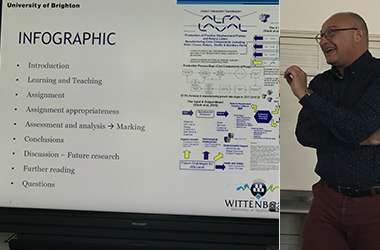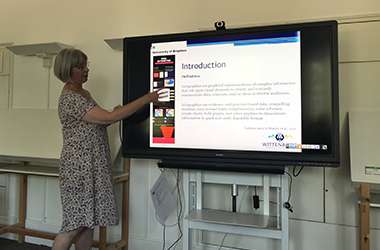Using Infographics in Education

The Effectiveness of Infographics in Education
The use of infographics as a means of assessing students was the topic presented by Wittenborg’s Head of the School of Education, Bert Meeuwsen, and Clare Millington, a senior lecturer at the University of Brighton’s Business School (BBS), at a conference in the UK.
Meeuwsen and Millington were attending the 3rd annual Brighton Business School Learning and Teaching Conference 2018. This year’s theme was “The Future of the Business School”.
Infographics is seen as an effective method to present complex data, concepts and ideas in a clear, concise manner. In other words, to compress “boring” numbers and percentages in a visually attractive way in an era of information overload.

Meeuwsen and Millington told their audience: “Infographics use evidence- and practice-based data, compelling statistics, easy-to-read fonts, complimentary color schemes, simple charts, bold graphs, and other graphics to disseminate information in quick and easily digestible formats.”
At WUAS this method was used for the first time in the BBS-WUAS IBA 2017-2018 double-degree programme module Operations and Systems Management. “Based on this experience, the idea of using infographics in a broader sense within WUAS’ additional educational programmes is being developed.”
Phil Race identified 11 assessment types, including traditional exams, essays, multiple-choice exams and portfolios of evidence. Meeuwsen and Millington added infographics to the list on Friday. Meeuwsen said: "We also advised on how to mark infographics in a more sophisticated manner by making use of 12 categories, and urged colleagues to start using infographics for tapping into students' creativity."
In the Operations and Systems Management module, students were equipped with information on how to develop an infographic, given an overview of design principles and assignments.
WUP 14/7/2018
by Anesca Smith
©WUAS Press